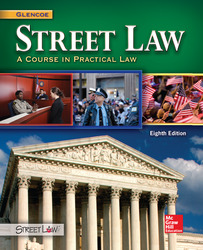
Street Law: A Course in Practical LawChapter 10: Crimes Against PropertyChapter OverviewsThe category of crimes against property includes two groups—crimes in which property is destroyed and crimes in which property is stolen or taken against the owner's will. During the late 1990s, there were fewer crimes against property, in part because Americans developed better ways to prevent these crimes. Arson and vandalism are examples of crimes involving the destruction of property. Arson is the intentional and malicious burning of another person's property. In most states it is a crime to burn any building or structure, even if the person setting the fire is the owner. Vandalism is the willful destruction of or damage to another person's property. Effects of vandalism include broken windows, graffiti, and damage to cars. There are many other categories of crimes that involve taking property against the will of the owner. Larceny is the unlawful taking and carrying away of another person's property with the intent never to return it to the owner. Most states identify larceny as either grand or petty. Grand larceny—which is a felony—occurs when anything above a certain value is stolen. Petty larceny is a misdemeanor that involves the theft of anything of small value. Robbery is the taking of property from a person's immediate possession by using force or threats, and is therefore also a crime against a person. Burglary is the unlawful entry into any dwelling or structure with the intention to commit a crime. A person who is entrusted with property but then takes it unlawfully is guilty of embezzlement. Extortion, which is also called blackmail, takes place when one person uses threats to obtain another person's property. The threats may include harm to the victim's body, property, reputation, or loved ones. (Other crimes against property include forgery, receiving stolen property, and unauthorized use of a vehicle.) The Internet has led to an increase in cybercrime, which is any unlawful use of a computer or computer technology. Identity theft often involves the use of a computer. Cybercrime also includes illegal downloading, illegal copying of software, and the intentional spreading of a computer virus. |  |















